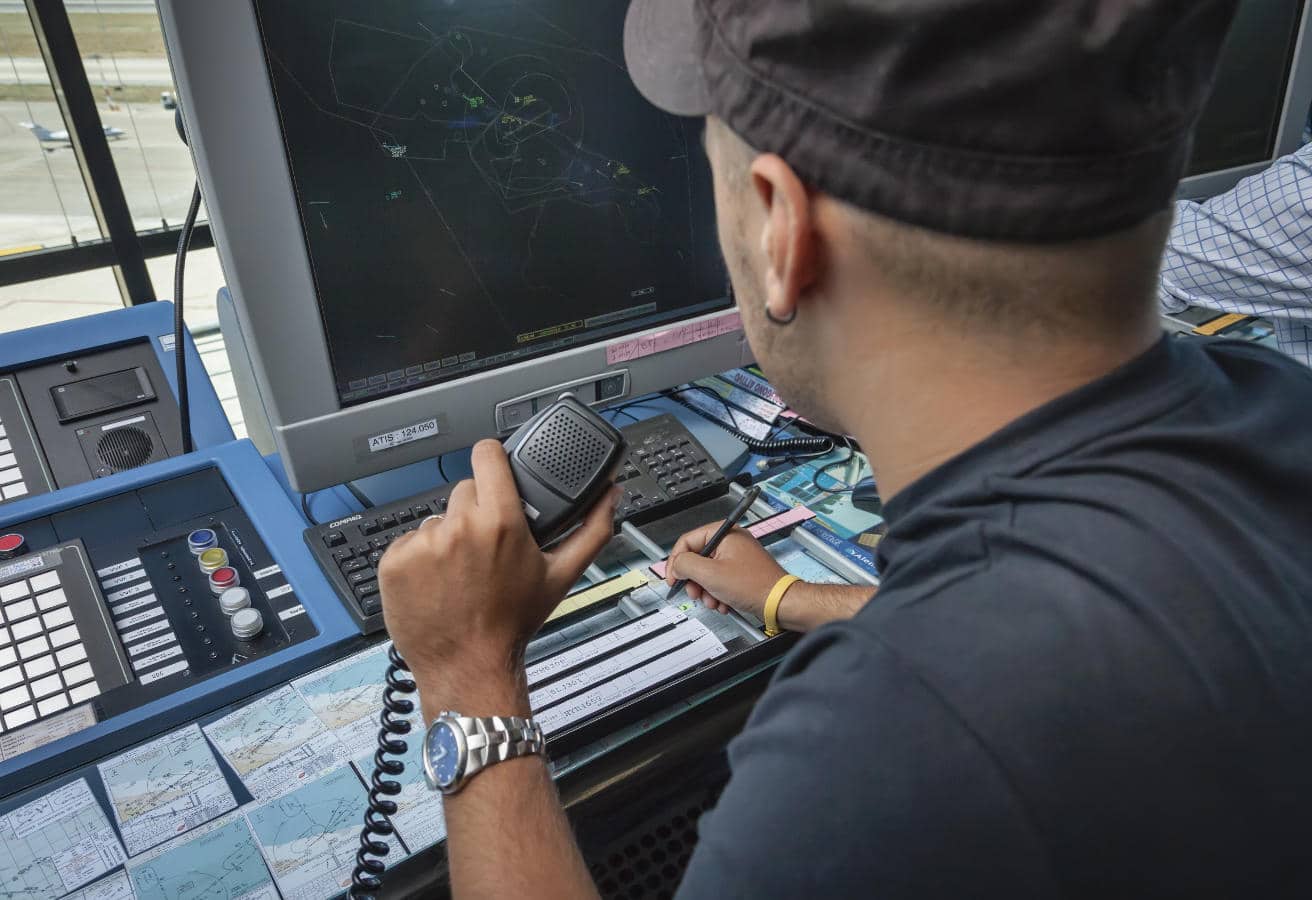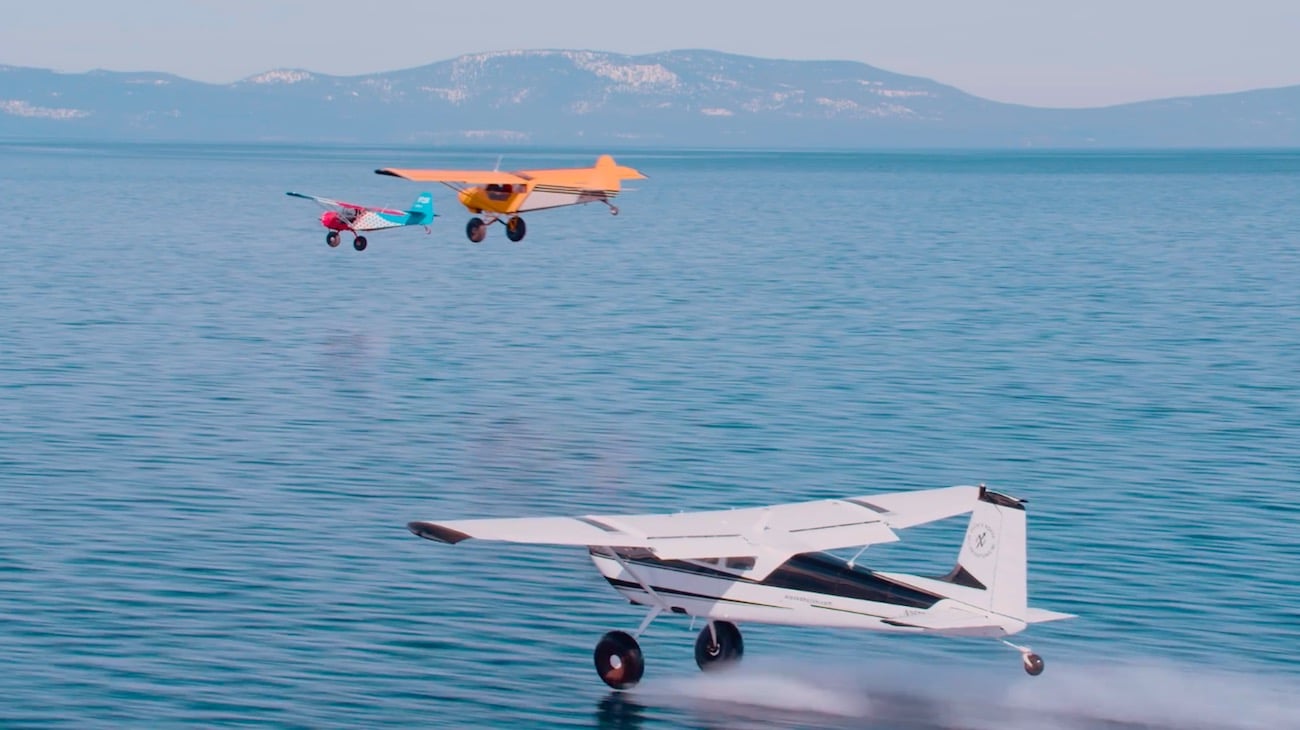The toxicology reports came back negative for everyone involved in both midair collisions.
After a public presentation regarding the pair of 2015 midair collisions, the NTSB has issued a Safety Alert for pilots with suggested actions that help to reduce their chances of being involved in a midair collision. In addition, in order to illustrate the limitations the NTSB feels are part of the “see and avoid” concept of aircraft separation, they’ve created and shared a two sets of five animations, one set for each accident. The animations depict the overall accident with ATC recordings and share the pilot’s visual field of view from each of the four aircraft involved in the accidents, in order to highlight “how difficult it can be for pilots to spot converging aircraft that may present a midair collision risk in a dynamic visual environment.”
NTSB investigators created the animations by using 3D laser equipment to scan the cockpit window and surrounding structure of four exemplar aircraft, which they combined with radar data to develop”an approximation of what each pilot likely saw before the crashes.” The investigators also used the radar data to create a version of the animation that highlights how in-cockpit technology that can give pilots graphical and aural alerts regarding nearby traffic might have made the pilots aware of the approaching traffic, and possibly prevented the midair collisions.
According to Christopher A. Hart, the NTSV Chairman, “These accidents and the animations clearly demonstrate the safety benefit of augmenting pilots’ vision with technological safety nets.” He added that these sorts of technology were key in helping pilots be aware of and maintain separation from nearby aircraft even when they have difficulty seeing those aircraft.
Details on the Moncks Corner, SC Midair Collision
Accident: On July 7, 2015, a Cessna 150 that had just departed from the Moncks Corner, SC, area collided with an F-16 on a training mission. An air traffic controller advised the F-16 pilot that the 150 was a potential traffic conflict, but the F-16 pilot was unable to visually acquire the 150 until the collision was unavoidable. Both of the people in the 150 were killed, but the F-16 pilot was able to eject and survived.
Probable Cause: The air traffic controller failed to “provide an appropriate resolution to the traffic conflict.” Contributing to the accident were “the inherent limitations of the see-and-avoid concept” which resulted in both pilots not being able to take the necessary evasive action in enough time to avoid the collision.
NTSB Aviation Accident Final Reports: To read the final report on the 150, click here, and for the final report on F-16, click here.
Additional NTSB Accident Materials: For the investigator in- charge’s safety presentation, click here, the factual report is viewable here and the public docket for the investigation can be viewed here.
NTSB Animations for the Moncks Corner, SC Midair Collision
In addition to the video embeds here, you can view the videos on the NTSB’s YouTube channel.
Moncks Corner Accident Overview
Moncks Corner Cessna 150 Pilot’s Visibility
Moncks Corner F-16 Pilot’s Visibility
Moncks Corner Cessna 150 Pilot’s Visibility with CDTI
Moncks Corner F-16 Pilot’s Visibility with CDTI
Details on the San Diego, CA Midair Collision
Accident: On August 16, 2015, a Sabreliner was inbound to land at Brown Field Municipal Airport in San Diego when it collided with a Cessna 172 practicing landings at the same airport. All four persons onboard the Sabreliner and the pilot of the 172 were killed.
Probable Cause: The local controller’s (LC) failure to “properly identify the aircraft in the pattern and to ensure control instructions provided to the intended Cessna on downwind were being performed before turning Eagle1 into its path for landing.” Contributing to the LC’s actions were an incomplete situational awareness after he took over communications from an LC trainee because of the high workload at the time the accident occurred. Contributing to the accident were “the inherent limitations of the see-and-avoid concept” which resulted in both pilots not being able to take the necessary evasive action in enough time to avoid the collision.
NTSB Aviation Accident Final Reports: To read the final report on the 172, click here, and for the final report on Sabreliner, click here.
Additional NTSB Accident Materials: For the investigator in- charge’s safety presentation, click here, the factual report is viewable here, and you can view the public docket here.
NTSB Animations for the San Diego, CA Midair Collision
San Diego Accident Overview
San Diego Cessna 172 Pilot’s Visibility
San Diego Cessna 172 Pilot’s Visibility with CDTI
San Diego Sabreliner Pilot’s Visibility
San Diego Sabreliner Pilot’s Visibility with CDTI
Final Recommendations
In addition to the above material, the NTSB also provided a Safety Recommendations and Alerts presentation, viewable here, and a safety alert on midair collisions, viewable here.
Finally, in addition to all the provided materials, the NTSB also issued a safety recommendation report and made two safety recommendations to the FAA and three companies who operate federal contract control towers in the US:
- Include the July 7, 2015, and August 16, 2015, midair collisions as examples in your instructor-led initial and recurrent training for air traffic controllers on controller judgment, vigilance, and/or safety awareness.
- Brief all air traffic controllers and their supervisors on the air traffic control errors in the July 7, 2015, and August 16, 2015, midair collisions.
The NTSB believe these accidents and the ensuing investigation “highlights the value of traffic avoidance technologies to pilots as an aid to detecting and avoiding other airplanes in flight.” They believe that such technologies can provide pilots with an important additional layer of safety.

On a hot, hazy August afternoon in 1996, we were droning along above Arizona’s Painted Desert at 10,500 MSL, headed due south. Two kids slept in the back of the Cessna 182. The ground and sky seemed to merge into a uniform beige; the radio was silent. I could almost have dozed off myself. Then, a dot appeared straight ahead—was it a new speck of dust on the windshield? In the blink of an eye, the dot transformed into a beige aircraft coming right at us. Instinctively, I lurched the yoke to the right, but at the same moment, the other pilot [Click here to read more…]
Original Post 11-3-16: NTSB Releases Docket, Prepares to Meet Regarding Two Midair Collisions
The NTSB will be holding a public meeting on Tuesday, November 15, 2016. At that meeting, they will present analytical findings, provide their probable cause, and make suggested safety improvements for two fatal midair collisions from 2015.
Details on The First Midair Collision
The first accident took place on July 7, 2015, in Moncks Corner, South Carolina. A Cessna 150M, which had departed Berkeley Country Airport several minutes earlier, collided with a US Air Force Lockheed-Martin F-16CM. The F-16 was practicing approaches to Charleston Air Force Base/International Airport. Both people in the Cessna were killed, and the F-16 was destroyed, however, the F-16 pilot was able to safely eject.
Details on the Second Midair Collision
The second accident took place on August 16, 2015, near San Diego. A Cessna 172M and a North American Rockwell NA265-60SC Sabreliner collided when both aircraft were attempting to land at Brown Field Municipal Airport, about a mile north of the US/Mexican border. All four people, two pilots and two mission specialists, aboard the Sabreliner and the single pilot aboard the 172 were killed.
Factual Dockets and Reports on the Collisions
On Tuesday, the NTSB released the factual report and opened the public docket for their investigation of the South Carolina collision. The report is viewable here and the docket can be viewed here.
For the San Diego collision, you can view the report here, and view the docket here.
The NTSB says the report and dockets “contain only factual information collected by NTSB investigators,” and that “opening the docket affords those with a need and desire for its contents the opportunity to review what factual information has been gathered about the accident.” They add that additional material may be added to the docket as it becomes available.
Featured Image: Flightlog, CC2, Note: This is not an image of the actual 172 involved in the accident.















Leave a Reply